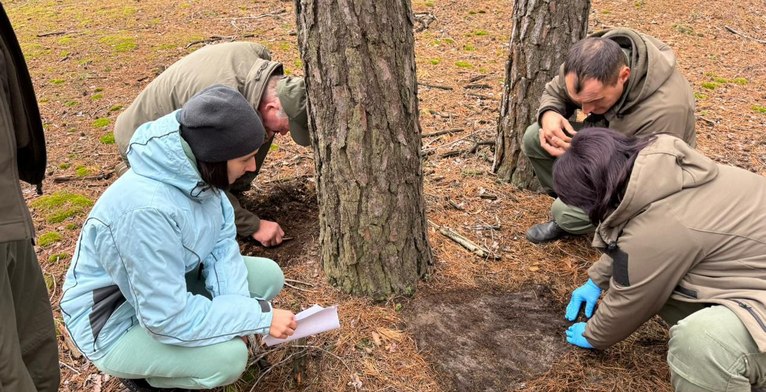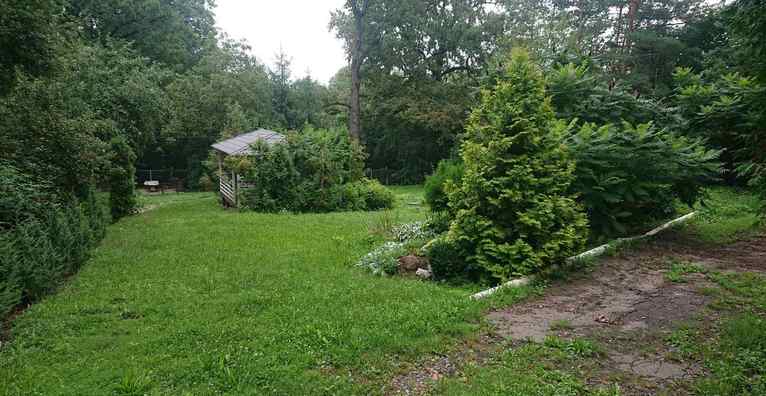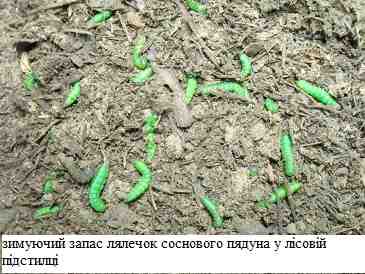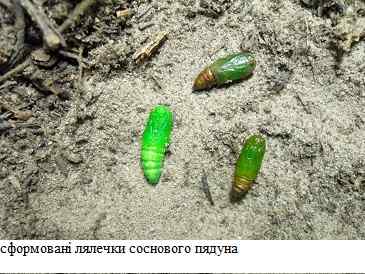Foliage-eating insects have always existed in forests, and they periodically experience population surges every few years. Damage to leaves and needles by these pests leads to a reduction in tree growth. By destroying foliage, insects disrupt normal water exchange and photosynthesis, weakening the trees and reducing their productivity. If defoliation occurs repeatedly, some coniferous species may die, especially in unfavorable conditions or when weakened by other factors. Additionally, trees damaged by defoliators become more susceptible to other threats, such as bark beetles or trunk pests.
Invisible Devourers
The pine looper moth (Bupalus piniarius L.) overwinters as a pupa in the forest litter. Unlike the pine cutworm, whose moths emerge early in spring, the pine looper requires additional warmth accumulation to complete its development. Literature data suggest that its flight period can start in mid-May and last until late June, depending on the year and location.
The mass outbreaks of the pine looper caterpillar correlate with high air temperatures in July of the previous year and, to a lesser extent, in September of the current year. The caterpillars destroy the entire photosynthetic apparatus of trees.
This pest particularly affects young and middle-aged pine stands. During outbreaks, the economic damage is significant. After repeated defoliation, trees weaken and dry out, becoming breeding grounds for bark beetles and other wood-boring insects.
These insects initially settle under the bark, further damaging the tree, and then burrow into the wood, rendering it commercially worthless within 1-2 years.
Over the past decades, outbreaks of the pine looper have been recorded in various state forestry enterprises in Donetsk, Luhansk, Poltava, and Kharkiv regions.
Studies show that outbreaks occur in the same areas if the composition and ecological conditions remain unchanged. Rapid temperature increases in spring create favorable conditions for pine looper outbreaks.
In autumn, the faster the temperature drops, the more favorable it is for outbreaks. If the decline starts later, the caterpillars' feeding period extends.
From 2014 to 2016, climatic conditions facilitated the gradual accumulation of pine looper populations. By 2016-2017, conditions were highly favorable, posing a significant threat to forests.
Forest protection services in affected areas must conduct regular monitoring and surveys with specialized forestry protection experts to detect and manage outbreaks promptly.
According to research by V.L. Meshkova, intervals between pine looper outbreaks range from 4-6, 10-12, and 23 years.
Primary outbreaks typically occur in dense, pure pine stands, usually in the central part of the forest, located in lowland areas.
Monitoring and control of overwintering pupae should be conducted in late autumn under the forest litter or in the upper soil layers. Sampling should be done randomly to accurately assess population density.
According to forest pathology surveys in 2017, pine looper populations were increasing in the Dvorichna and Kupiansk forestries, with an affected area of 382 hectares, 338 of which required eradication measures in 2018.
Additionally, an outbreak was recorded in the Holy Mountains National Nature Park in Donetsk region, affecting 2,328 hectares, with severe damage on 177 hectares. Lab analysis of collected pupae showed 100% survival rate, indicating further spread.








